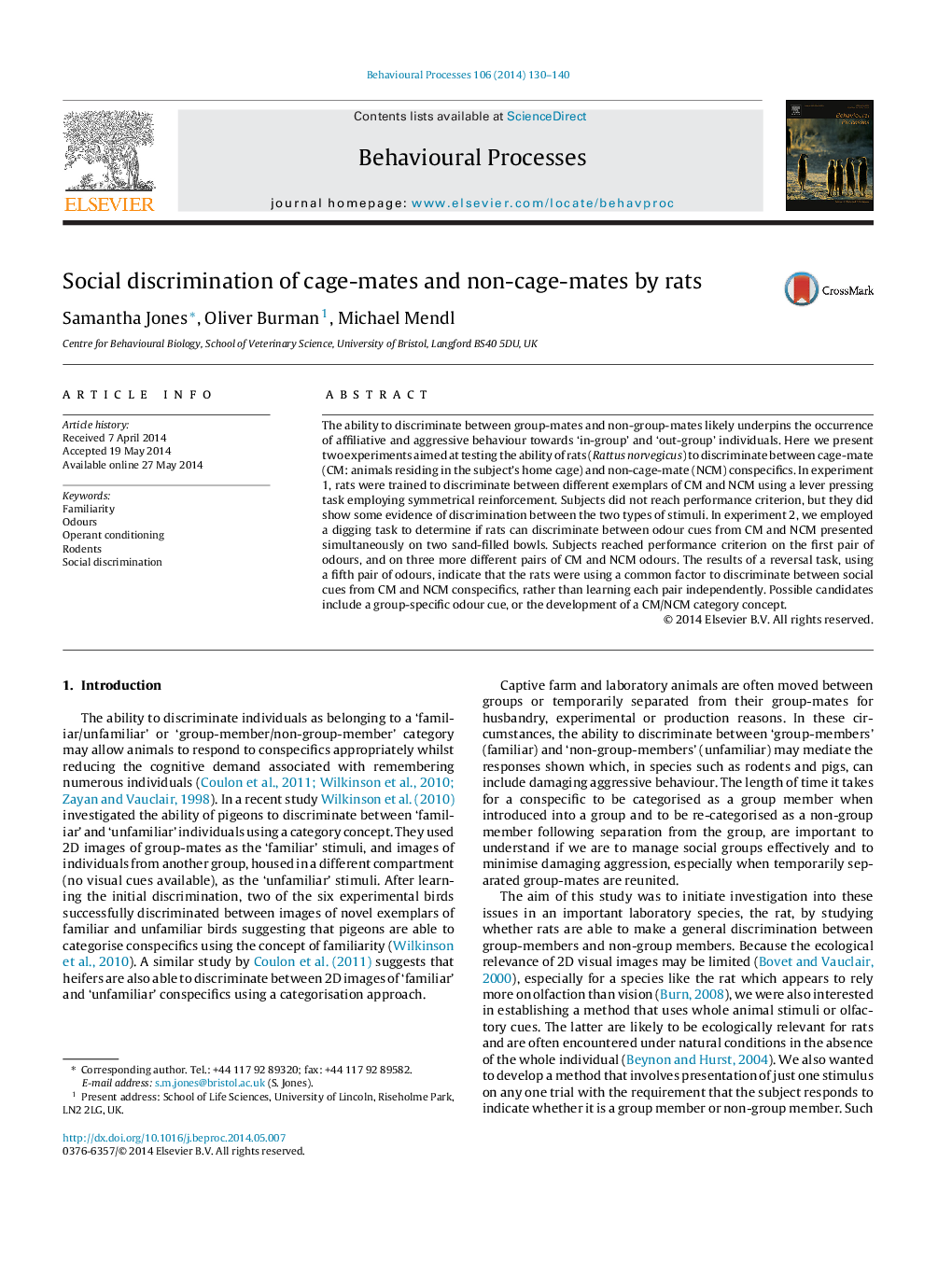| Article ID | Journal | Published Year | Pages | File Type |
|---|---|---|---|---|
| 2426669 | Behavioural Processes | 2014 | 11 Pages |
•We investigated the social discrimination abilities of rats.•Rats did not discriminate between live conspecifics using a lever pressing task.•Rats did discriminate between conspecific odours using a digging task.
The ability to discriminate between group-mates and non-group-mates likely underpins the occurrence of affiliative and aggressive behaviour towards ‘in-group’ and ‘out-group’ individuals. Here we present two experiments aimed at testing the ability of rats (Rattus norvegicus) to discriminate between cage-mate (CM: animals residing in the subject's home cage) and non-cage-mate (NCM) conspecifics. In experiment 1, rats were trained to discriminate between different exemplars of CM and NCM using a lever pressing task employing symmetrical reinforcement. Subjects did not reach performance criterion, but they did show some evidence of discrimination between the two types of stimuli. In experiment 2, we employed a digging task to determine if rats can discriminate between odour cues from CM and NCM presented simultaneously on two sand-filled bowls. Subjects reached performance criterion on the first pair of odours, and on three more different pairs of CM and NCM odours. The results of a reversal task, using a fifth pair of odours, indicate that the rats were using a common factor to discriminate between social cues from CM and NCM conspecifics, rather than learning each pair independently. Possible candidates include a group-specific odour cue, or the development of a CM/NCM category concept.
